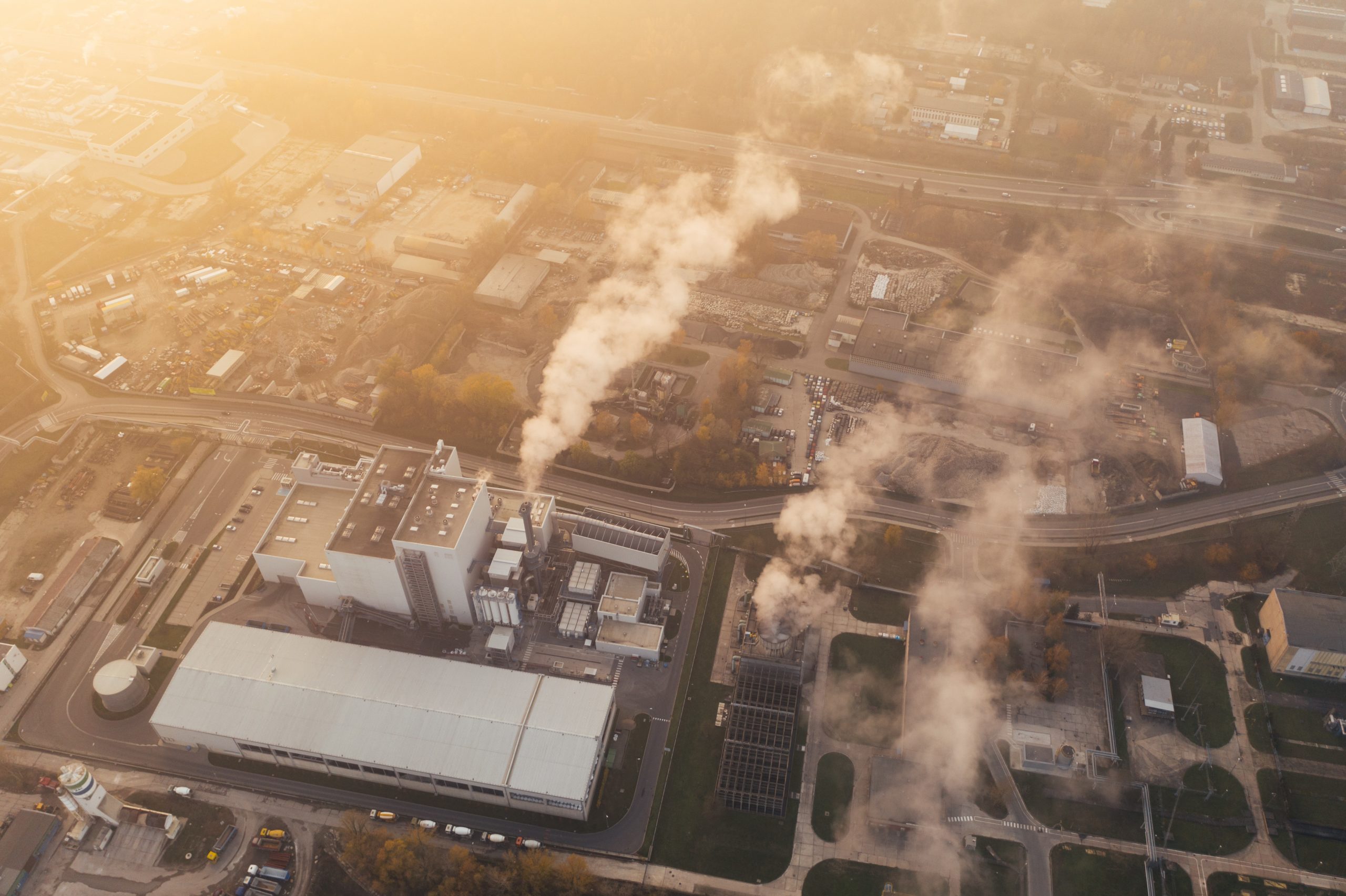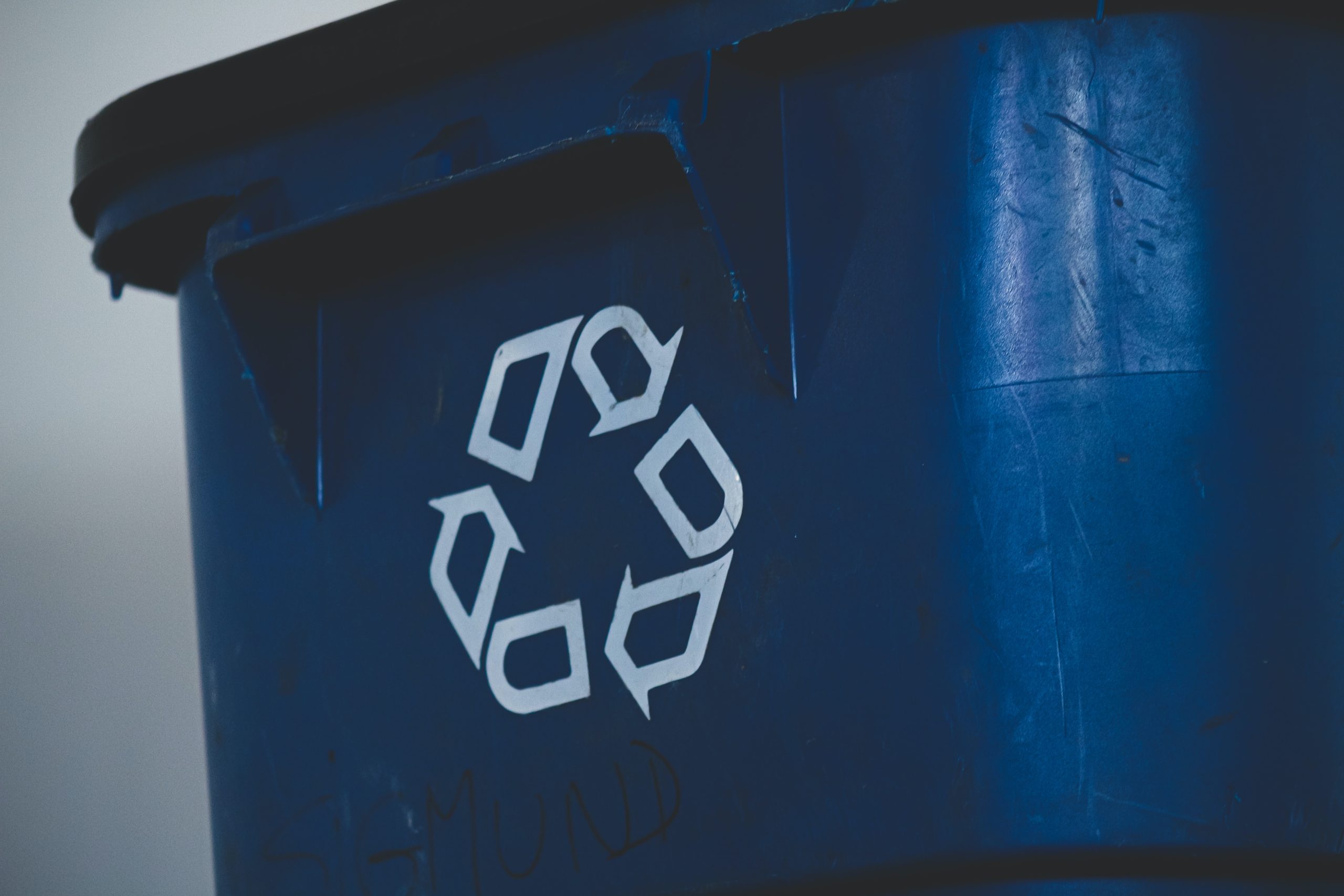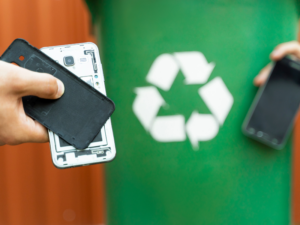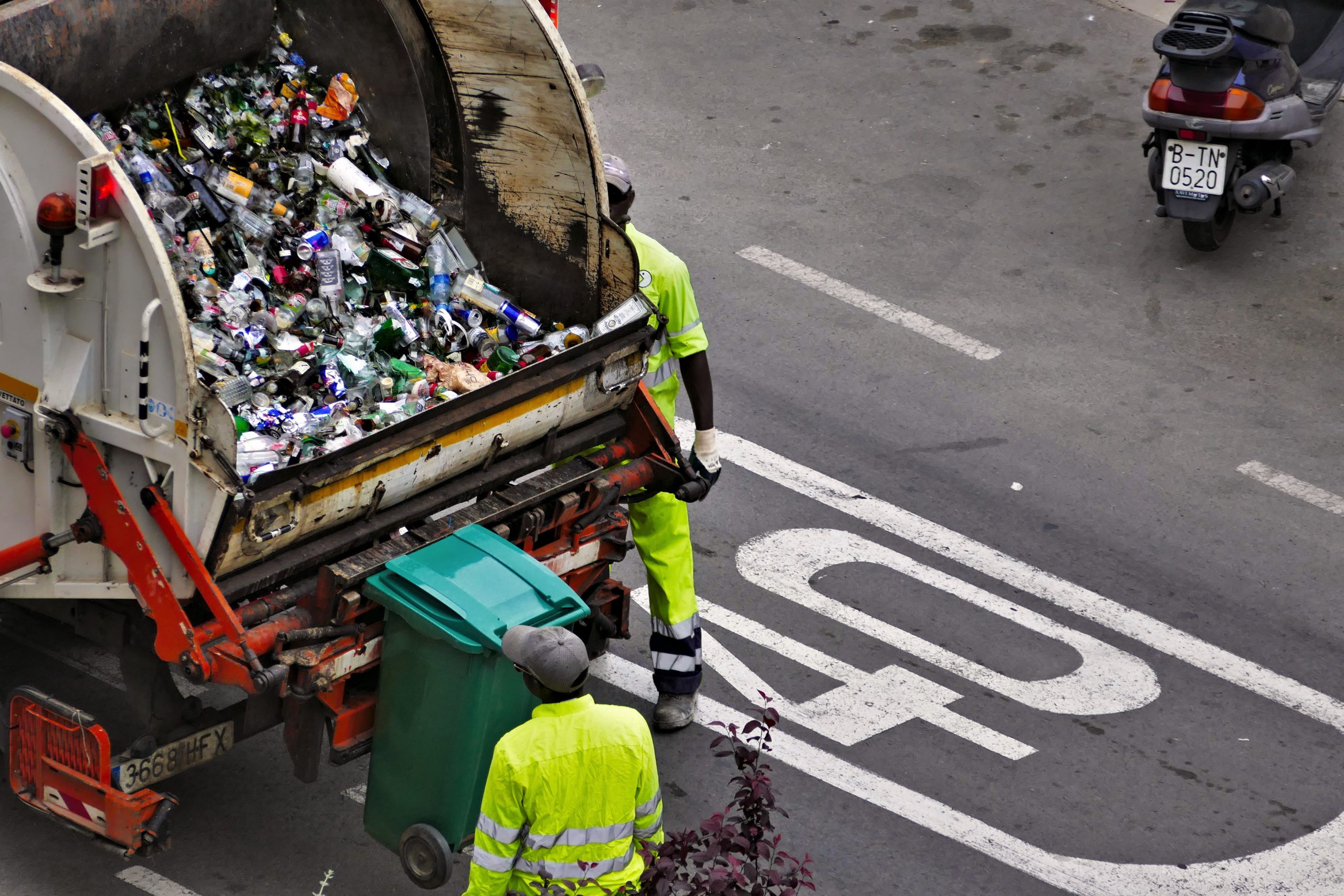How Does Tech Recycling Work?
Almost everyone is used to tossing items like glass and plastic into recycling bins. For many of the items we use every day, we know they have to be recycled and have easy access to recycling services. However, these aren’t the only things we need to worry about recycling, and not everything is as easy as putting something in your regular recycling bin and getting it picked up at your house. Most people use tech devices every day, and eventually, you’ll need to get rid of your current devices. When this time comes, you’ll need to find recycling services meant just for electronic equipment.
In many states, you’re legally required to recycle your old electronics, but even in areas where this isn’t mandatory, electronics recycling is still extremely important. If you aren’t familiar with how tech recycling works or why it’s important, now is the time to find out.
Why is Tech Recycling Important?
Since you use tech devices every day, you might not think of them as being dangerous in any way. While these devices are safe when they’re maintained, they can become extremely hazardous when they’re exposed to the elements in landfills. Toxins from old electronics can seep into the ground and nearby water. Many landfills also burn the materials they get, which causes additional concerns. Burning the materials inside of discarded electronics creates harmful smoke that puts workers at great risk and can travel far, affecting many people. The toxins in our electronics release a harmful impact on the health of people all over the world, as well as devastating effects on our environment. Unfortunately, many unwanted devices and electronics still end up in landfills every year, with there being millions of tons of e-waste in landfills.
Like all recycling programs, server recycling and other services help ensure that materials that can be reused see a second life. Many devices also contain precious metal that is in limited supply. You might not realize it, but your everyday devices contain materials like gold, silver, platinum, and copper. Once we’ve used up all these resources, there will be no way to get them back. Sending materials like this to waste away in landfills is a huge waste of resources that could have been reused had they been properly recycled. E-waste recycling keeps us from having to source new materials and requires less energy for new products to be made.
How are Electronics Recycled?
Electronics recycling can be difficult to understand and what exactly it entails depends on the materials. One of the most important parts of the recycling process is separating the materials in electronics. Electronics are shredded, which makes it easy for different elements of old devices and equipment to be removed. This means sorting through glass, plastic, and the precious metals found in electronics. Different methods of separation are used to retrieve different materials, such as powerful magnets used to separate iron and steel from the rest of the materials. These technologies help make separating materials from old electronics as efficient as possible and prevent any materials from being missed. After all the shredded materials are separated, they’re ready to be resold for new products.
What are Recycled Electronics Used For?
After all the materials are sorted and sold, you might be wondering where everything ends up. Recycled materials from old electronics can be reused for many products. Of course, many of the recycled materials from old recycles are ideal to use for new electronics. However, new electronics are far from the only thing recycled electronics can be used to make. For example, metals from old electronics can be used to create just about anything you would normally use metal for, like jewelry.
Find Out How Newtech Recycling Can Help
We all rely on technology to live our lives, so we’re all responsible for making sure our electronic waste is recycled correctly. Recycling your unwanted electronics might not be as simple as putting them in the recycling bin, but it doesn’t need to be difficult. E-waste recycling services and ITAD companies are vital in today’s society and will continue to be as we try to manage the growing e-waste problem. At Newtech Recycling, we know how detrimental e-waste can be and are dedicated to providing services that make it easy for you to recycle your unwanted electronics.
If you have old electronics that you don’t know what to do with or want to know more about how IT equipment recycling companies work, contact Newtech Recycling today.
6 Ways to Reduce Your Carbon Footprint
According to the U.S. Energy Information Administration, carbon emissions are expected to increase dramatically throughout 2021 and 2022. This despite the fact that carbon emissions account for nearly 80% of all greenhouse gases present in the atmosphere.
Environmentally friendly options for everything from household appliances to global transportation are cheaper and more widely available than ever. So why are people still struggling to reduce their carbon footprint at home? In some cases, it might be because they don’t know the best ways to do that.
Here, then, are 6 helpful tips we can all use to cut down on energy waste:
1. Recycle E-Waste Correctly
There’s a reason Newtech Recycling and other IT equipment recycling companies have made it their mission to help people dispose of their electronic devices responsibly. With nearly 10 million tons of unwanted tech discarded annually—including computers, mobile phones, photocopiers, televisions, and more—e-waste is one of the biggest environmental hazards of the modern age.
Why is that? First, it’s because of the components that are used in the manufacture of these devices. Many people don’t realize that the technology they use every day contains such toxic substances as polybrominated diphenyl ethers and polybrominated biphenyls, common flame retardants with harmful carbon emissions. The other big problem with e-waste is how a lot of people get rid of it, namely by throwing it in landfills instead of recycling it correctly.
2. Conserve Water Usage
One simple way that anyone can reduce their carbon footprint at home is to conserve their water usage. Often, the effects of water waste on the environment go overlooked, but the impact is considerable. Pumping, treating, and heating water uses up 3% of America’s energy production each year, with the bulk of that energy coming from fossil fuels.
Silvia Borges with EnviroMom told us how easy it is to start conserving water. “When I decided to start living a greener life, I started with water conservation since it sounded easiest and most seamless of changes. Tiny adjustments to our daily routines can save dozens of gallons of water per person every month.”
Considering that a toilet flush can waste up to 7 gallons of water, that’s a lot of precious power down the toilet, literally. To cut back on excess water use, avoid taking long showers, flushing tissues and other items down the toilet, and leaving the faucet running when washing dishes, shaving, or brushing your teeth.
3. Try Energy-Efficient Appliances
As the importance of environmental preservation becomes a bigger part of the public consciousness, attempts have been made to promote energy efficiency in a multitude of ways. Some of these ways may seem very small, but even small steps can add up to something big over time.
A good example of this idea is the proliferation of energy-efficient appliances that are currently available. Though usually comparable in price to less energy-efficient versions, eco-friendly LED lightbulbs, refrigerators, and washing machines require a lot less power to function. This, in turn, has a bonus advantage: lowering your monthly utility bills.
4. Use Renewable Energy
One of the biggest contributors to global climate change remains fossil fuel usage, with an estimated 81% of all energy in America coming from oil, coal, and natural gas. Aside from the damage that these energy sources do to the environment on their own, they also require a lot of labor and environmental destruction to produce and transport. Add to this the fact that fossil fuels are finite and gradually depleting, and the necessity for sustainable energy alternatives becomes apparent.
In that sense, switching to renewable energy sources like solar power and wind turbines isn’t just a way of reducing greenhouse gases; it’s also a vital step in ensuring humanity’s future. Consider signing up for an energy-saving utility program, joining a community solar farm, or even installing solar panels on your roof.
5. Travel More Conservatively
Everyone knows that automobiles are one of the guiltiest culprits when it comes to carbon emissions. While advances have been made in forms of transportations that use other fuel sources, not everyone has access to such cutting-edge vehicles. One thing we all have access to, however, is good judgment.
Simply put, you don’t have to drive a brand new, top-of-the-line hybrid automobile to travel more in a more ecologically friendly way. You don’t even have to get rid of your car. You just have to plan out how much you use it. Instead of driving to the store every time you need a carton of milk or taking your car for short trips to your friend’s house two blocks over, try only going out when you absolutely need to. Shop for multiple items at once. Walk or carpool when you have the opportunity.
John Murphy shared that he chooses to travel using an electric bike instead or a car. “I reduce my carbon footprint by using an electric bike for any short trips into town instead of taking the car.” Small changes like the one John made can have a very large impact on your individual carbon footprint.
6. Upgrade Less Often
We all love the technology that makes our lives easier: phones, computers, copy machines, television sets, you name it. The only thing many of us enjoy more than showing our latest gadgets off to all our friends is upgrading to a newer, better model. These days, it’s become increasingly difficult to keep up with the rapid upgrade cycle, with some devices feeling obsolete before we even take them out of the box.
The result of all this upgrading is a veritable tsunami of tech flooding stores, homes, and ultimately garbage dumps. Phone and tablet recycling can help, but increasing demand is hard to keep up with. Increased demand means a need for more precious metals like gold, lead, mercury, and aluminum, and that means more destructive mining. If reducing your carbon footprint at home is important to you, hold out a little longer before buying that new flatscreen TV or switching to the latest iPhone.
A New Bill Could Clean Up Recycling in America
It’s a bit of an understatement to say that the U.S. recycling industry is in a bad spot. This is due to a range of factors that include the quality of American recyclables, China, and the pandemic.
For years, China was a reliable recycling partner that accepted U.S. paper and plastics so it could make new products from them. It was an affordable option that kept everything moving along in the United States.
In 2018, however, China stopped taking most plastics and mixed paper recyclables, citing that they were soiled with hazardous waste. Then, the U.S. market of recycled single-use plastics shot up drastically once the COVID-19 pandemic got underway.
The result? Residents throughout the United States have been learning from their city or county waste management companies that the market for their recyclables has disappeared. These municipalities have been doing one of two things: either paying more for U.S.-based recyclers to take their paper, plastic, and metals or simply throw the recyclables away in the garbage.
In the latter case, the materials end up in landfills. At Newtech Recycling, we know the effects of e-waste on water and other areas of the environment. It’s too critical to ignore this problem. So, what is the solution here?
We’re covering one way this could go: following the example of New York, as reported in this story from The New York Times.
The New York Recycling Bill
Recent goings-on in the state of New York provide some guidance on what can be done. Two Democratic state lawmakers, Senator Todd Kaminsky and Assemblyman Steve Englebright, recently introduced a recycling bill that could serve as a model for the rest of the country.
The bill’s primary purpose is to make New York’s recycling programs profitable again, but not only that: the bill leaves open the possibility of creating more clean-energy jobs and even making the state’s garbage sorting more sophisticated.
If passed, the recycling bill would go a long way toward helping local recycling efforts throughout New York. The legislation would require big-time product manufacturers to pay for the costs of recycling their packaging; smaller manufacturers would not have to do this. The concept of putting the recycling onus on manufacturers rather than consumers is known as extended producer responsibility.
If the New York bill passes, municipalities across the state would start recouping the millions of dollars in tax money they have been paying for their own recycling. Another result would be the reining in of manufacturers’ current ability to do whatever they want regarding the recyclable nature of their product packaging. For instance, if certain kinds of labels are placed on otherwise recyclable bottles, the entire product becomes non-recyclable and therefore the responsibility of the consumer to throw out.
New York’s Kaminsky has also addressed the possibility of manufacturers exploiting their new recycling costs by simply passing the expenses on to consumers. He said the law can be structured in ways that prevent price gouging. Any increases in product prices due to such packaging requirements would be minimal, he claimed, since those costs would be diffused throughout entire industries.
Reactions to the Recycling Bill
The state of New York has ventured into extended producer responsibility before; state recycling laws have gone after paint, thermometers, and tech recycling, but these specific product types barely made a dent in the state’s recycling efforts. Conversely, the new recycling bill covers the more common recyclables of paper, plastic, glass, and metal, which together make up almost half of the state’s e-waste.
Extended producer responsibility is considered an effective way to address recycling and sustainability. Instead of punishing people and organizations for not recycling, it encourages green packaging as a choice: “Make recyclable packaging and save money.”
Some waste disposal managers in New York have hailed the state bill as a way forward for New Yorkers, both in terms of its consumer-friendliness and the environmental impacts it is expected to have.
New York is also setting an example for certain other states--including California, Indiana, Massachusetts, Maine, and Oregon--that are now looking at recycling bills of their own. As initiatives such as this progress in the United States, even some opponents are getting onboard, since they at least want to have a say in how the process will work rather than simply be told later how things are.
When it comes to important matters such as network equipment recycling and any other efforts to keep dangerous materials out of the earth, it is really up to governments to make the big calls. Governor of New York Andrew M. Cuomo has not publicly commented on the extended producer responsibility bill yet, but the legislation remains in play for the spring.
E-Scrap Stockpile Case Ends in Settlement
E-waste is a huge issue all over the world. While it’s important for individuals to take responsibility for their unwanted electronics, it’s especially important for businesses to do this. Companies own a huge amount of electronics that contain hazardous material that needs to be taken care of properly.
To help prevent electronics from ending up in landfills and creating toxic waste, special processing facilities handle our unwanted electronics by providing techwaste recycling. When companies need to get rid of unwanted electronics, they may ship them to places like this to have them taken care of. Not only is it important for the environment for these materials to be recycled correctly, but many companies could be legally required to ensure that their old electronics are recycled.
While the companies that help recycle old electronics responsibly and prevent more e-waste from accumulating in landfills are extremely important, doing this isn’t always easy, and they aren’t always able to handle this huge amount of waste.
What Happens to Unwanted Electronics?
A good example of what can sometimes happen with unwanted electronics is a recent case involving Closed Loop Refining and Recovery and many electronics manufacturers who sent them e-scrap. Closed Loop Refining and Recovery was founded in 2010 with the intention of finding a way to recycle cathode ray tubes (CRT) found in televisions and computer monitors. CRT can be extremely toxic when they’re discarded and end up in landfills, so electronics recycling is an important part of preventing this waste from occurring. However, Closed Loop failed in 2016, leaving behind over 100 million pounds of scrap electronics. The landlords who owned the warehouses used by Closed Loop were then left with this huge amount of waste.
This amount of e-waste places an enormous responsibility on the landlords, and materials like CRT need to be taken care of according to environmental regulations. Not only is recycling this amount of CRT a challenge, but it’s also a huge financial expense.
With millions of pounds of CRT still in Closed Loop’s warehouses needing to be taken care of, the landlords who own these warehouses have had to take legal action. The landlords of these warehouses sued dozens of electronics manufacturers that shipped materials to Closed Loop. The landlords of the warehouses claim that the electronic manufacturers are responsible for assisting in the cleanup of the scrap electronics left behind. These companies participate in state extended producer responsibility laws, which require them to help fund e-waste recycling if they want to sell their products in those states.
One of the electronics manufacturers who sent these materials to the warehouses is Sony Electronics. Sony did agree to pay $1.2 million to help the warehouses remove some of the e-scrap they shipped to the warehouses. The electronics manufacturer’s agreement would help remove around 5.5% of the materials scrap companies sent to the warehouses. Sony’s payment of $1.2 million was determined by looking at the company’s market share, not the amount of materials they shipped to Closed Loop. The other companies that have settled in the case have determined their payment based on the amount of materials they sent to the warehouses and have typically paid 14 cents per pound of materials. The $1.2 million that Sony has agreed to pay would be similar to what other companies settled paid to clean up the materials. So far, 25 other defendants in the case have reached settlements, which totals to over $3.1 million to help clean up the e-scrap that was left behind in the warehouses.
However, not all defendants involved in the case have reached settlements. There are several companies that were sued by the landlords of the Closed Loop warehouses that claim they have no legal responsibility to help clean up the materials they sent to the warehouses. According to some of these companies, the responsibility should be on the landlords to clean up the materials instead.
Recycle Your Old Electronics Responsibly
E-waste is a huge issue that everyone should be concerned about. Recycling industries need to continue to handle e-waste carefully to ensure that this is recycled properly. At Newtech Recycling, we understand what a growing problem this is and the consequences that e-waste such as CRT ending up in landfills can have. When you need help with things like a PC recycle, you can trust that Newtech Recycling will handle it responsibly.
Contact Newtech Recycling today to learn more about our recycling process and the services we offer, such as our safe computer disposal.
10 Things You Probably Don’t Recycle but Should
E-waste, or electronic waste, is one of the biggest dangers facing the environment today. Almost 10 million tons of unwanted, outdated, or nonfunctioning electronics are dumped into U.S. landfills every year. Yasir Nawaz, digital content producer at PureVPN, stated “It’s fascinating how wasteful we can be, especially when there are so many items that we can easily recycle.”
You may not realize it, but much of the technology you use in your everyday life contains toxic substances. When not properly recycled, all that hazardous waste ends up seeping into our natural resources. It finds its way into the air we breathe and the water we drink, and ultimately it finds its way into us. The results? E-waste’s effects on the human body are varied and include such life-threatening conditions as cancer, neurological disease, lead poisoning, respiratory illness, organ damage, and more.
So then, why don’t more people donate their unwanted tech to e-waste recycling programs or use professional disposal services like Newtech Recycling? After all, scheduling a pick-up is fast and easy, and our New Jersey Department of Environmental Protection-approved recycling facilities not only keep toxic e-waste from contaminating the earth but also harvest valuable components that can be reused in the manufacture of newer, better technology.
In many cases, people don’t realize what kinds of items count as e-waste. Even worse, they don’t realize how poisonous the materials inside those items really are. Here, then, are ten everyday objects you may not realize have a huge impact on the environment. Next time, instead of throwing them in the garbage can, recycle these items. Mother Earth will thank you.
Mobile Devices
Smart phones, tablets, portable media players, and PDA devices are among the most popular consumer electronics available today. They’re also among the most replaced. Phones in particular are often replaced with newer, fancier models long before their usefulness has ceased. More than 350,000 smart phones are disposed of every day. Luckily, proper phone and tablet recycling can help keeps such harmful materials as mercury, cadmium, chlorine, and bromine out of landfills.
TVs & Computer Monitors
The bigger the device, the harder it is to get rid of. That’s why televisions and computer monitors often end up in places they don’t belong. Older CRT TVs and monitors are especially deadly, with large amounts of phosphor dust and up to eight pounds of lead, but newer models have their own dangers. Researchers have found that modern LCD TVs contain approximately 100 potentially toxic chemicals, while LED TVs contain hazardous waste substances like arsenic, lead, nickel, and copper, as well as a type of flame retardant linked to various developmental disorders.
Household Appliances
Microwaves, refrigerators, air conditioners, and toasters might not be the first things you think of when you think of modern technology. And, admittedly, they’re nowhere near as advanced as computers and cell phones. But all of these household appliances, plus many more, are just as environmentally hazardous. The fluorinated hydrocarbons in your fridge and air conditioner can cause arrhythmia and other heart conditions, while the beryllium in your microwave and toaster can damage your lungs permanently.
Office Equipment
Recycling old photocopiers, fax machines, scanners, and printers might seem like a lot of work, especially when you work in an office that uses a lot of them. At Newtech Recycling, we do our best to make it easier, offering on-site electronic pick-ups so you can rest easy. And resting easy is something you can definitely do knowing that the antimony, barium, cadmium, lead, bromine, and other substances contained in those devices won’t end up contaminating the soil, air, or water
Power Tools
Much like household appliances, power tools aren’t usually associated with e-waste, which is often associated with IT equipment and mobile devices. E-waste is just what the name implies, however, electronic waste, and that definitely includes power tools. Whether it’s a cordless drill, reciprocating saw, belt sander, heat gun, or nail gun, if it’s portable then it likely uses a battery that contains nickel, cadmium, and/or lithium, not to mention copper or aluminum wiring and other metallic components.
Wires & Cables
Many of us know what it’s like to end up with all kinds of miscellaneous wires and cables. Whether it’s a bunch of old USB, HDMI, or RCA cords, these things often end up sitting in the bottom of some drawer in our entertainment centers, doing nothing but collecting dust. If you plan to get rid of them in the process of decluttering, though, donate or recycle instead of just throwing them out. Most wires and cables contain harmful lead compounds, as well as reusable copper and aluminum.
Hard Drives
Proper hard drive and server disposal are among the most important e-waste recycling practices for both businesses and individuals alike. Why? Because not only do computers contain numerous hazardous waste substances, they also store all manner of sensitive data. That includes everything from private correspondences to banking information and medical records. Even wiping your computer isn’t enough to stop a skilled hacker from recovering that data. Only a professional hard drive shredding service like Newtech Recycling can guarantee your personal information stays safe.
Electronics Accessories
Once you’ve taken care of your hard drive and your monitor, you might think your computer recycling days are done. Think again. Computer accessories such as your speakers, mouse, and keyboard contain many of the same heavy metals and pollutants. That’s equally true for other kinds of electronics accessories, such as phone chargers, video game controllers, and wireless headphones. Recycle these items to help keep lithium, chlorine, lead, and other poisons.
Fluorescent Lamps
You’ve probably heard that fluorescent lights are hazardous to your health, but you may not have heard why. A big reason is because of the mercury they have inside. Mercury is an extremely deadly toxin that can damage many vital organs, including the brain, nervous system, kidneys, and lungs. Fluorescent bulbs are doubly dangerous because of how fragile they are. When one breaks, it doesn’t just snap cleanly into two pieces, but often creates a puff of glass “powder” that is all too easy to inhale.
Medical & Lab Equipment
Despite all the hazards that come with using it irresponsibly, technology has the potential to make all of our lives better. Nowhere is that dichotomy embodied better than in medical and lab equipment. These devices keep us healthy and help us develop new medicines. Without taking appropriate lab equipment recycling practices into consideration, though, they can do just as much bad as good, thanks to their frequent use of phthalates, flame retardants, mercury, and other components.
Your Smartphone is Poisoning the Planet: How Cell Phones Impact the Environment
If you were only allowed to use one modern technological device for the rest of your life, what would it be?
For many of us, the answer would probably be our smartphones. It wasn’t that long ago that most families only had one phone to share, and it was usually a landline installed in their home by a phone company technician. Today, though, every family member has their own smartphone, and they take it with them everywhere. To work. To school. On vacation. Even into the bathroom.
More than just phones, these devices are portable computers providing 24/7 access to all the knowledge and communication capabilities of the Internet. What would we do without them?
But maybe a better question is “What are they doing to the environment?”
In an age where we have all this information at our fingertips, this is one question that’s easy to ignore. However, in order to start protecting our planet’s future, more people need to ask this question. Then, hopefully, once we understand the answer to that question, we can start asking an equally important one: “What can we do to repair the damage?”
Keep reading to learn more about the environmental impact of smartphones and what we can do to help this ever-growing problem.
How Do Cell Phones Impact the Environment?
The two big problems with smartphones are the same two big problems facing all modern technology: hazardous materials and people.
First, the manufacturing of so many electronic devices today involves hazardous chemicals that, when disposed of carelessly, pose a major threat not only to the environment but also to human health.
Problem 1: Phones Contain Toxic Chemicals
According to Yawer Malik, digital marketing pro at Cloudways, “Over 1.5 Billion smartphones are being sold in a year, but the recycling process never carries out as compared to the selling ratio. Only 15% of devices are being recycled properly. Smartphones contain hundreds of finite materials that include rare earth elements and minerals. If mobile phones are not properly recycled they can be harmful to human life because they release toxic chemicals and metal into the air and waterways causing harm to people.”
Also commonly used in smartphone manufacturing are things called BFRs (short for “brominated flame retardant”). BFRs are very good for preventing malfunctioning electronics from catching fire. Unfortunately, they’re also highly poisonous to humans and animals, capable of severely damaging both our nervous and reproductive systems.
Problem 2: Irresponsibly Discarding Old Phones
The other big problem is us. Or more specifically, how irresponsible we often are when it comes to getting rid of our old devices. If everyone followed good tech recycling practices, the danger of e-waste would be almost nonexistent. Unfortunately, too few of us do that. Studies show that Americans throw away more than 350,000 phones daily, resulting in 9.4 million tons of e-waste pollution every year.
One reason for this might be because of how few of us know what’s actually inside our phones. More than just plastic and glass, these pocket-sized machines require many components that are as volatile as they are valuable.
Richard Latimer, CEO of Veritas Homebuyers, shared with us that “Smartphone batteries and circuit boards are absolutely horrible for the environment and horrible for humans as well. There are many heavy metals in the printed circuit boards and batteries that include, lead, nickel, beryllium, mercury, lithium, and other toxic metals. When the phone is thrown in the trash and ends up in a landfill the battery will start to corrode and break down. As the phone breaks down the toxic waste leeches into the soil where it ends up in our water supply. Also, Lithium batteries tend to explode when exposed to the elements and cause underground landfill fires to start.”
Responsible phone and tablet recycling practices keep these substances out of our soil, air, and water. However, when such practices are ignored in favor of haphazardly throwing old electronics in the garbage, those electronics usually end up in landfills. There, they gradually deteriorate over time, releasing the hazardous chemicals within. These toxins can then seep into the ground, get carried by rainfall into nearby water supplies, or even travel for miles on currents of wind.
How Can We Reverse the Impact of Smartphones?
As serious as today’s environmental situation is, it’s far from hopeless. In fact, there are many things that both individuals and businesses can do to help reduce the negative environmental impact of smartphone usage.
For starters, we can all make a point of using our devices for longer. Often, the lure of cutting-edge new technology seduces us into throwing out our old phones, tablets, and computers long before they actually need to be replaced. More frequent upgrades not only increase the likelihood of these devices being disposed of improperly it also increases market demand.
The only way for a phone company to satisfy that demand is with increased manufacturing. More manufacturing means more mining for components such as palladium, copper, nickel, gold, and platinum, which means more environmental damage.
The best way for people to do their part to reduce e-waste pollution, though, is by following proper electronic waste recycling practices. First and foremost, that means not simply discarding our unwanted devices into landfills as if they were harmless paper products or spoiled leftovers. Modern technology needs to be handled much more carefully.
Lessen the Impact of Smartphones with E-Waste Recycling
No one knows the importance of proper e-waste disposal better than Newtech Recycling. From the moment we opened our original Bridgewater electronics recycling plant, Newtech Recycling has strived to meet the e-waste disposal needs of New Jersey, Connecticut, New York, and Pennsylvania. Our meticulous recycling program breaks down every single device into component parts. Instead of being left to decay and contaminate our natural resources, these components can then be reentered into the manufacturing process and used in the creation of newer, better electronics.
For more information on how Newtech Recycling can help you dispose of your unwanted technology in an ethical, efficient, and environmentally friendly way, contact us today.
8 Ways to Safely Manage and Recycle E-Waste
E-waste is one of the most pressing environmental issues we have today, and it’s something many of us play a role in. As we become more and more dependent on electronics and buy electronics more often, the amount of electronic waste will continue to rise if nothing is done to stop it. Although e-waste is a huge concern, we can all do our part to help prevent it from getting worse.
Here are eight ways to safely manage e-waste and prevent it from growing.
Learn the Important of Managing E-Waste
The first thing you should do to help reduce the amount of e-waste you create is to learn the importance of preventing e-waste. Many people might not be fully aware of the worldwide e-waste problem that affects each one of us. If you’re unaware of the dangerous chemicals that e-waste has, you might not fully understand why it’s so important to stop it, or you might not feel like you need to do as much as you can to help. Before doing anything else, educate yourself and others in your life on the effects e-waste has on the environment and what you can do to help.
Buy Only What You Need
Many of us tend to over-buy items that we don’t really need, which can create a lot of unnecessary waste. To reduce the amount of e-waste being produced, you need to make sure you aren’t consuming more than you need. Maybe you’re replacing some computers at work, and decide it’s better to replace them all at once, even though you don’t need them. You might also just want a newer version of a device even though the one you have is fine. Before buying anything, ask yourself if it’s really necessary. Being smarter about buying electronics is a great way to help prevent more e-waste from occurring.
Keep a List of What You Have
Individuals and companies might not always be aware of the number of devices and accessories for those devices they actually have. Things can easily get misplaced and forgotten about, so you might have more than you need already. You don’t want to think you need to buy something, not knowing that you already have it or let it go to waste. To help make you aware of exactly all the electronics you own, keep a list of what you have.
Take Care of What You Have
We all know how easily electronics can break. Of course, sometimes damage is out of your control, so you can’t always prevent electronics from breaking. Still, doing everything you can to expand the lives of your electronics will help you keep them longer, so you don’t have to rebuy them as often. This is also a great way of saving you money, and once you make a habit of maintaining your devices, it’s very easy to do.
Donate Old Electronics That Still Work
Just because you’re done using something doesn’t necessarily mean you have to recycle it just yet. There are plenty of instances where people get rid of old electronics that still have life left in them. If your old devices are still usable, consider donating to people who could benefit from them. While recycling is extremely important, there’s no reason to recycle old devices when they’re still in good shape.
Utilize the Cloud
Today, there isn’t as much need for hard drives to store everything you need. Instead, you can keep everything stored in the cloud. This can help make everything you need easily accessible and makes it easier to share with others, but it’s also good for anyone concerned about e-waste. By normalizing the use of the cloud, you can help reduce the demand that’s normally placed on hard drives.
Protect Your Data
Sensitive data that you don’t want other people to get access to is harder to get rid of than you might think. Before you donate, sell, or recycle any old electronics, you need to be sure that your data is fully wiped from it. At Newtech Recycling, we can help ensure that your data is completely wiped before recycling so that you can get rid of unwanted devices as safely as possible.
Find Your Local Recycling Center
Electronics don’t get recycled the same way your other recyclable items do. Disposing of electronic devices the right way is easy but does require you to take some extra steps. To recycle your old electronics, you’ll need to find your local e-waste recycling center. You also want to make sure that anywhere you bring old electronics to be recycled is taken care of properly. This helps ensure that no electronic waste ends up in landfills.
Contact Newtech Recycling today to learn more about how we can help with electronic waste recycling.
We’re Running Out of Space in Landfills
Where does garbage go when you throw it away? Most people never give it a second thought. Our garbage collectors might as well be magicians; for all we know, they make our refuse disappear.
The truth, of course, is that garbage doesn’t simply vanish. Instead, much of it ends up in landfills, designated waste disposal sites that try to reduce environmental pollution by confining non-hazardous materials to as compact and remote a location as possible.
That’s the idea, anyway. At Newtech Recycling, we know that it doesn’t always work out that way.
The Problem of Waste Disposal and Landfill Waste
One of the biggest challenges facing landfills today is electronic waste, or e-waste. When individuals and organizations forgo proper tech recycling in favor of illegally discarding their unwanted computers, televisions, cell phones, and other devices by dumping them in landfills, they’re not just breaking the law. They’re also introducing toxic materials like lead, mercury, chlorofluorocarbons, and more into the environment, where it can poison the soil, water, and air alike.
That’s not the only issue caused by the improper disposal of e-waste, though. There’s another big problem with landfill waste, one that’s only getting bigger every day.
Simply put, we’re running out of space in landfills.

Important Landfill Capacity Statistics
According to recent Environmental Protection Agency estimates, Americans dump roughly 150 million tons of garbage, including e-waste, into landfills annually. The EPA also estimates that only 25% of all discarded electronic devices ever get recycled. That means a lot of our old tech is ending up exactly where it’s not supposed to.
As a result, the Solid Waste Environmental Excellence Protocol reports that the U.S. could exceed its current landfill capacity within just 18 years. States with more urban areas, like New York, are already struggling with waste disposal. Some have resorted to exporting their trash to other larger states, effectively sweeping the issue under the rug instead of trying to solve it.
With the amount of garbage Americans produce increasing each year and with e-waste in particular on the rise thanks to how ubiquitous high-tech devices have become, the need for landfill space is rapidly outpacing our ability to accommodate it.
Simply put, landfill waste is a huge problem that will ultimately affect everyone.
What Happens When a Landfill Is Full?
As noted above, modern electronic equipment contains all kinds of hazardous materials and heavy metals, including mercury, cadmium, arsenic, lithium, beryllium oxide, and lead. When left to decay in overcrowded landfills, e-waste poses a very real threat both to the environment and to human health.
Many landfills today are equipped with special liners that work to prevent our garbage from seeping into the ground. However, with landfill capacity being stretched thinner and thinner over time, these liners are proving inadequate at shielding the earth from our refuse. When toxic e-waste materials leech into the soil, it can have far-reaching effects. Instead of fading away, these materials spread out, contaminating vegetation and the animals who feed off it. These animals can then introduce contamination into the human population, and even into the food supply.
Additionally, rainfall often causes e-waste pollutants to run off into streams and other water sources, and wind currents carry dangerous gases and particles for miles. In the human body, these contaminants can cause serious damage to the lungs, liver, kidneys, heart, and other organs, and may lead to cancer, miscarriage, nerve disorders, and worse.
So, where does our garbage go after we’ve thrown it away? Well, after a while, it comes back to haunt us, doesn’t it?
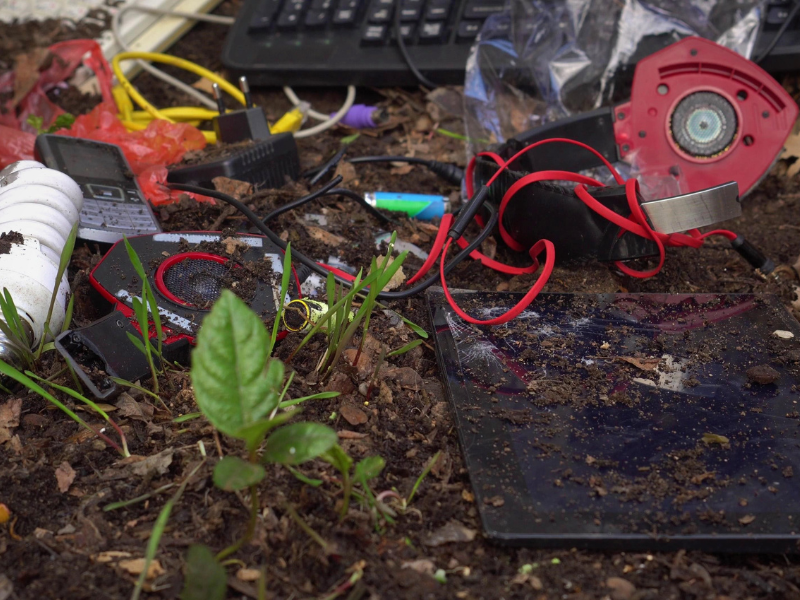
How to Reduce Landfill Pollution
If the idea that we’re running out of space in landfills is as concerning to you as it should be, it’s worth remembering that the situation is not irreversible. One obvious way to create more landfill space is to simply create more landfills. Unfortunately, that’s a slower process than you might think. It often takes several years to find an ideal location, apply for permits, and prepare the site in accordance with EPA regulations.
Worse, creating more landfills isn’t sustainable. We only have so much space, after all. Replacing lost waste disposal land with land taken from other areas will ultimately lead to us having no land of any kind whatsoever. Furthermore, it does nothing to combat the ever-growing threat of pollution.
The best way of unburdening landfill capacity, then, is to reduce the amount of landfill waste we dump there to begin with. Today’s landfills are full of all kinds of compostable and recyclable material, from plastic and aluminum to paper and food waste. What’s more, recycling has another benefit: it reduces the need for manufacturers to mine raw materials for their products.
Proper phone, TV, and desktop disposal services, such as those available from Newtech Recycling, allow for valuable recyclable materials like gold, platinum, copper, and nickel to be recovered and reused.
Help Mitigate Harmful Landfill Waste with Newtech Recycling
Knowing how big our landfill problem is right now can leave one feeling rather defeated. It’s such a prolific problem that affects the world, and you might be thinking, what can I possibly do to help?
One of the best ways to protect the environment from the harmful effects of e-waste is to do your part and properly dispose of your electronic waste. If you only have a few old phones or charging cables at home, take them to an electronic waste drop-off location instead of throwing them in the trash.
Are you a business looking for e-waste disposal or corporate cleanout services? We can help! Contact NewTech Recycling today to learn how we can help you safely dispose of your e-waste.
5 Steps Your Company Can Take to Fight Climate Change
Over the past few years, many of us have made changes in our personal lives to become more eco-friendly to help tackle issues like climate change. While it’s great for everyone to make this effort, it isn’t only up to individuals to do better. It’s extremely important for companies in all industries and of all sizes to make better choices and reduce the amount of harm we do to the environment. By making better choices, your company can do its part to reduce its environmental impact.
Here are five steps your company can take to fight climate change.
Produce Less Waste
We’re all guilty of producing a lot of waste, but there are ways to cut down on this at work. There are likely a lot of people in your company using single-use plastic, like disposable water bottles and coffee cups. This is an easy thing to change. You can encourage people to start bringing in reusable bottles, straws, and other commonly single-use items. Businesses can also go a step further and invest in things like branded reusable water bottles to ensure everyone has one and get rid of offering single-use items completely.
One of the most obvious sources of waste within companies is paper, which isn’t really all that necessary today. Louis Wright says, “It has been said time and time again, the easiest way to make a big difference is to limit the amount of plastic and paper waste in your company. This can be as simple from moving systems completely digital, a process that is not as scary or difficult as it may sound in this modern era.”
Recycle Your Old Electronics
Electronics seem like a great way of producing less waste, as they can almost entirely eliminate the need for paper for some companies and significantly decrease it for others. While computers can help reduce the amount of paper you need, electronics themselves create a huge amount of waste. E-waste caused by discarded electronics that end up in landfills is a big cause for concern and is already negatively impacting the environment. Electronic waste recycling is the only way we can stop the e-waste problem from growing.
Everyone needs to recycle their unwanted electronics, but this is especially important for businesses. A company might have hundreds of computers, in addition to things like printers and copiers, which can create a huge amount of waste, which makes IT equipment recycling companies extremely important. When it’s time for your company to get rid of its old electronics, be sure to do so responsibly to prevent it from creating more e-waste. Newtech Recycling can ensure that all of your unwanted electronics get recycled properly.
Do Less Work-Related Travel
The average commute to work is just under a half-hour, which may not seem like much. However, this adds up to several hours of travel time every week when you think about it. When you think about the number of people driving to work each day, especially those traveling even further, this is a huge amount of travel just for work. Of course, you also have things like work trips that add in even more travel. Some can make better choices like biking to work if they’re close by or carpooling with coworkers to reduce the number of cars on the road. Businesses can encourage these behaviors and provide incentives so people will follow them.
Laurence Jones from KidsNaturally Photography recommends that businesses “ Cut down on staff travel. We've all become used to more video calls. These save time & travel costs, including saving fuel and thus carbon emissions.” While daily work travel is necessary for many, COVID-19 has taught us that many can do their jobs from their homes, eliminating the need for travel. If work from home is an option for your business, consider making this a permanent option even after COVID-19 restrictions are over, even if you only offer work from home days for only a few days a week.
Be More Energy-Efficient
Office buildings can use up a huge amount of energy, but there are ways they can improve. There are plenty of changes you can make around the office that will save energy, and some are even easier than you might think. Swapping out light bulbs for more energy-efficient ones and buying energy-efficient appliances when your current ones need to be replaced is a great way to do this. If possible, you may even switch to a renewable energy source.
Laurence Jones recommends that businesses “Use less energy for heating & air conditioning. Investment now in improved insulation and efficient heating/cooling equipment (such as heat pumps) will cut future bills and cut carbon emissions.” Even making small things, like setting lights in conference rooms, bathrooms, and hallways that don’t get much use on a timer can make sure you aren’t wasting energy.
Purchase Sustainable Products
You might be surprised at how many of your everyday items can be harmful to the environment. There are many sustainable alternatives to many commonly used products on the market today. When you do need to buy new things for the company, like paper products, cleaning supplies, and even snacks, find sustainable brands to buy from. Using products and services from businesses with the same environmental values as yours can also help make eco-friendly businesses can continue to make a difference.
Tips for a Sustainable Holiday Season
The holiday season for most people means getting and giving gifts, large meals, and visiting with friends and family. With so much excitement going on, it can be easy to forget about the impact some traditions and actions have on the environment. You don’t have to give up celebrating your favorite holiday to be more eco-friendly, but there are simple, mindful ways that you can make the holidays more sustainable without giving up the things you love.
Follow these tips for a sustainable holiday season.
Avoid Wrapping Paper
Seeing beautifully wrapped presents under the tree is one of the most quintessential parts of the holiday season. However, many people don’t think about the amount of waste this creates. Wrapping paper gets torn off in seconds and is immediately thrown away, so while it looks nice, it’s extremely wasteful, and there are much better options for sustainable gift-giving.
Vertical Roots General Manager Andrew Hare gives us some advice on sustainable wrapping alternatives. “Did you know most gift wrapping is not recyclable? Glittery and shiny paper, dyed tissue, plastic ribbons, and bows are made with harmful chemicals and can contaminate your recycling. Instead, wrap with paper bags, reusable totes, and tea towels. Bonus: they double as extra gifts! Instead of tape, use twine and fabric. Cut out cardboard boxes for tags and embellish with sprigs of thyme, lavender, and small clippings from your yard!” These sustainable ideas can look even better than traditional wrapping paper, so there’s no reason not to switch.
Recycle What You Can
New devices are usually some of the most sought-after holiday gifts. New computers, tablets, phones, and gaming devices are at the top of lists for people of all ages. If you were gifted a new device this holiday season, you probably already had an older version of it that you don’t need anymore. If you got a new tablet this year and you’re thinking, “how do I recycle my old tablet,” Newtech Recycling can help.
Andrew Hare tells us that, “There is massive amounts of waste during the holiday season. Extend your holiday caring to the planet by recycling. 1. Learn about what can be recycled at your local facility before you shop. 2. Purchase items and packaging that can easily be recycled or are made of recycled materials. 3. Safely recycle odd items such as batteries and metals. 4. Save ribbons, bows, and extra wrapping you receive to be used next year!” Whether you’re making sure your cardboard boxes get taken care of or that you’re using the right desktop disposal for old computers, you can make sure that everything that can be recycled is taken care of.
Give Second-Hand or Homemade Gifts
You might think that getting everyone brand new gifts from the store is the only option. This is what most people do, but there are more eco-friendly options. Buying from second-hand stores or making your own gifts is a much more sustainable and unique way of giving gifts. This isn’t just good for the environment, but your wallet will also appreciate this move. This year has been financially difficult for many, and figuring out how to get gifts for everyone on your list can be a strain. By thrifting and making your own gifts, you can save a huge amount of money without having to skip people on your list.
Bertie Cowan, founder of Effortless Outdoors, advises that “From Christmas trees to Christmas presents, there are so many nearly new or even new items that people have bought and used once or even never at all. Keep the cycle and recycle. Why not try upcycling old gifts or objects, decorate your house with arts and crafts, and use some of those lockdown crafts the kids made to decoupage something for the grandparent's Gifts.”
Cut Down on Travel
Many of us need to travel out of town to see friends or families during the holidays or have others make the trip to come see us. However, this year is different for all of us, and few people are leaving their homes for holiday parties. This can be extremely depressing for those of us who have to miss out on our favorite holiday traditions, but there is a bright side to this, aside from keeping ourselves and others healthy. With a large decrease in the number of people traveling, we’re making a positive impact on the environment.
Bertie Cowan, says that “It's a secret blessing for mother nature this Christmas, well actually the whole of 2020, has given time back to the world to restore some of its natural resources as well as the wildlife reclaiming some of their lands. keep all travel- air, road, sea, and rail to a minimum.” By staying home this year, you’re doing a lot more to help others than you may realize.
Use Sustainable Decorations
Fortunately, many of our holiday decorations get reused each year, so the environmental impact from many decorations is relatively low. However, if you are looking for new decorations this year, be smart about what you choose. Try making your own Christmas decorations, check out what’s available in second-hand and vintage stores, or buy things made from recycled content when possible.
Countless houses have string lights and other light-up decorations outside the house, as well as lights around the Christmas tree and likely other lights around the inside of the house. This is an area where many of us can improve and get more energy-efficient lights. Brian Conghalie, founder of myopencountry.com, advocates for LED lights for decorating and says, “Switching to LED lights can make a big difference in terms of energy consumption and carbon footprints. In fact, LED lights use around 25% of the energy of conventional incandescent bulbs.



